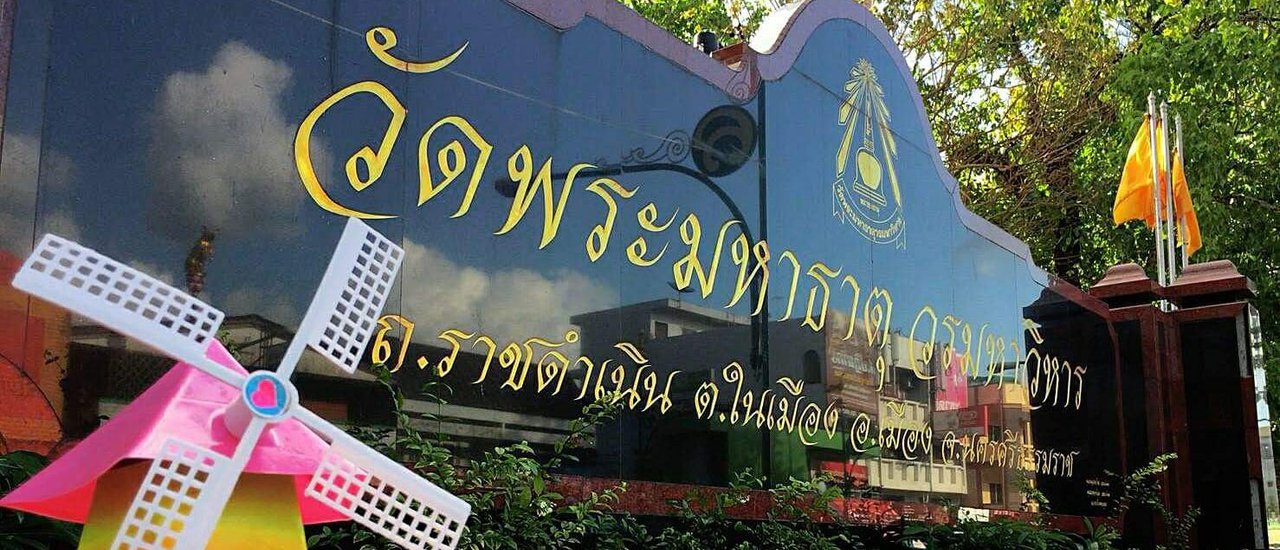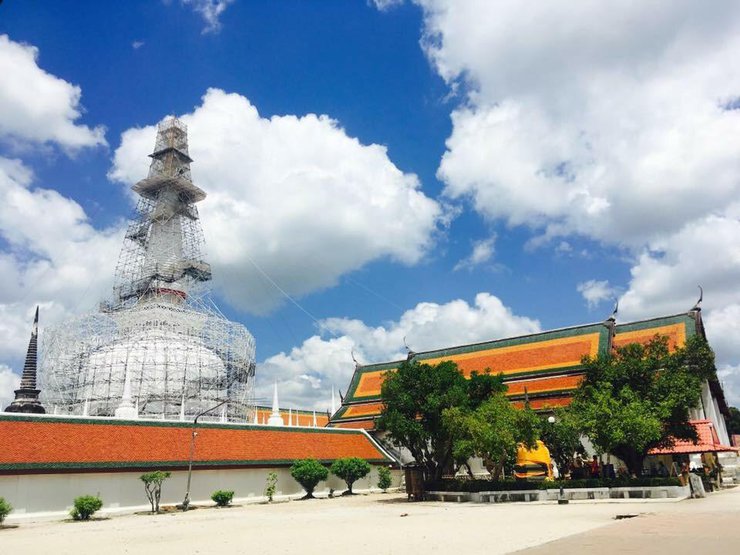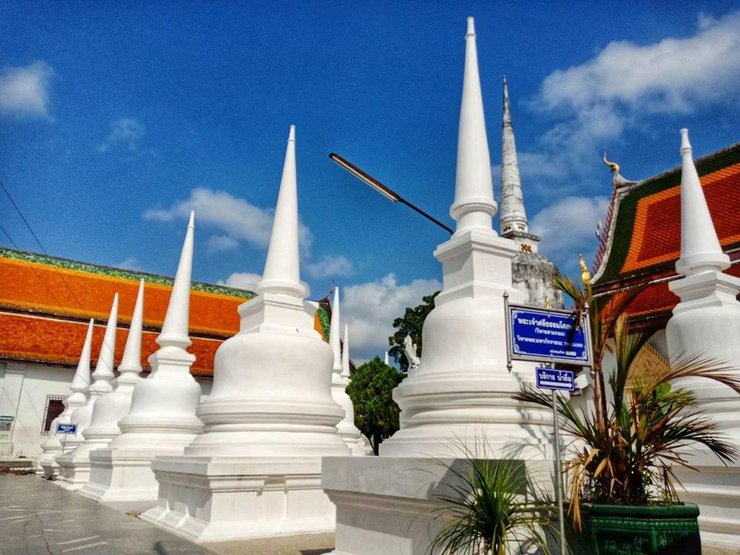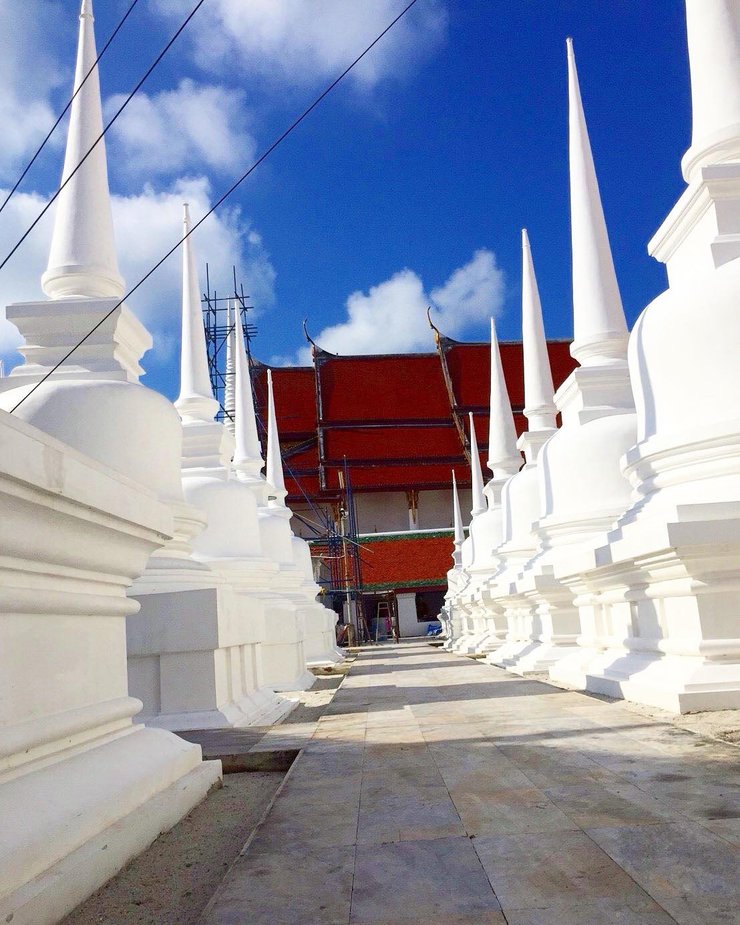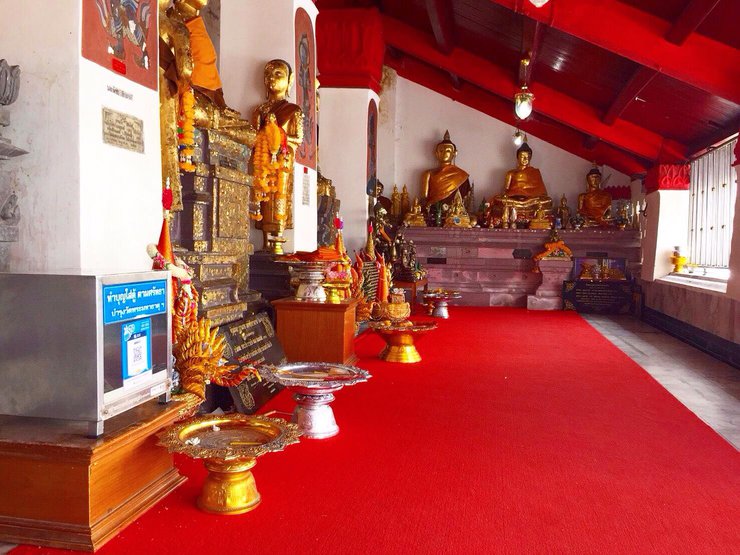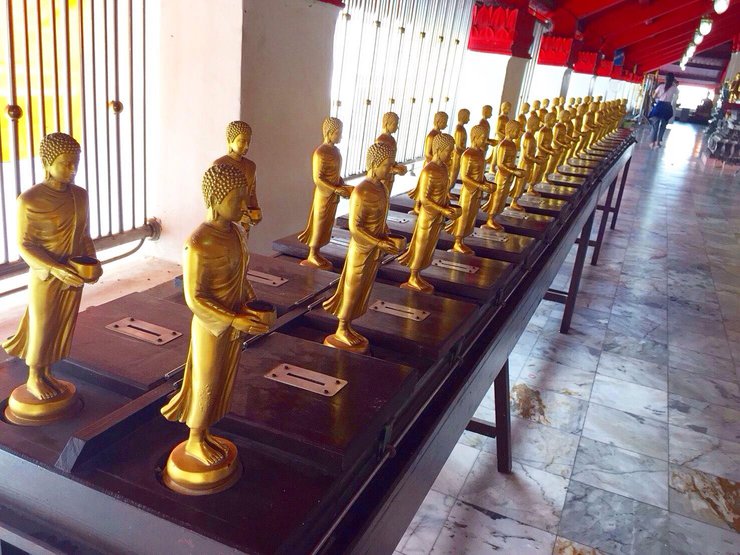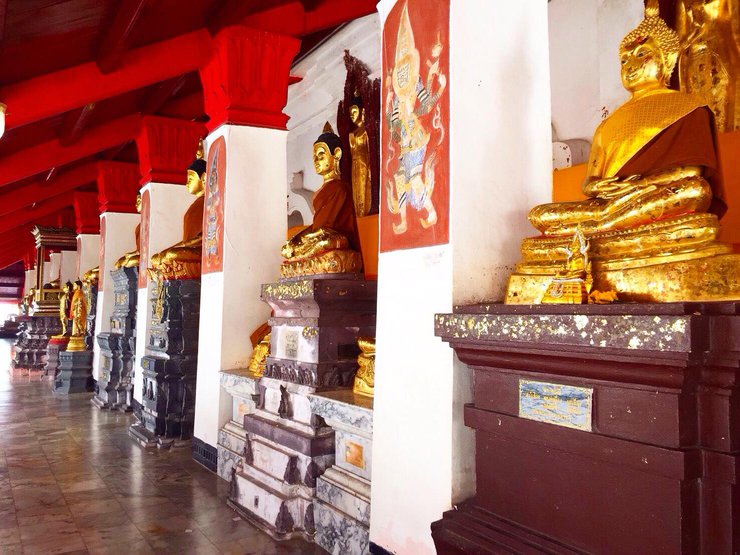When visiting Nakhon Si Thammarat, a must-see destination is Wat Phra Mahathat Woramahawihan, or "Wat Phra That" as it is known locally.

The revered Wat Phra Mahathat Woramahawihan, a sacred landmark and spiritual beacon for the people of Nakhon Si Thammarat and Buddhists alike, houses the renowned Phra Borommathat Chedi. This iconic structure, a symbol of the province, enshrines the sacred relics of Lord Buddha. Designated as an ancient monument by the Fine Arts Department, Wat Phra Mahathat stands as one of the most significant religious sites in Southern Thailand.


The temple grounds encompass various shrines. The image above depicts the walkway within the Phra Wihan Khot, where there are donation points for those who wish to contribute according to their faith.


Surrounding the **main stupa** are 149 smaller **satellite stupas**, known as **"บริวารเจดีย์"**. These stupas were built by descendants of ancestors to house the cremated remains of their deceased relatives. It is believed that by doing so, their loved ones will be reborn in the Buddhist faith in the next life.

The inner sanctum houses a shrine dedicated to the Triple Gem and Buddha statues.


The Phra Borommathat Chedi was built in 1719 CE. It is the largest pagoda in southern Thailand and the first large bell-shaped pagoda in Southeast Asia. At the base of the terrace, there are 22 elephants surrounding it, representing a great stupa built outside the city according to the Sri Lankan tradition.



The Phra Ma Wihan, a stairway leading to the Phra Borommathat, is flanked by statues of the guardian deities, Thao Khettukat-Ramthep, on either side of the entrance and exit. Thao Khettukat-Ramthep is believed to be the same as Thao Chatuchakarm Ramthep, the renowned deity of Nakhon Si Thammarat. In addition to these two deities, other guardians are also present, including Thao Chatulokaban, Nagas, Garudas, and lions.

The Royal Wihan was built during the reign of King Songtham. Later, the wihan deteriorated, so Chao Phraya Nakhon Si Thammarat (Noi) restored it between 1791 and 1839. This wihan is therefore valuable in terms of its continuation of the unique architectural style from the Ayutthaya period.

The Royal Chapel houses the **Phra Si Sakyamuni Sri Dharmaraja Buddha**, the principal Buddha image of the chapel. This magnificent statue, crafted in the early Ayutthaya style, stands at an impressive 3 wa 1 sok 12 inches in width. It is situated on a high pedestal, flanked by the Buddha's chief disciples. The statue's central position within the chapel suggests its significance as the primary object of veneration.

In front of the main hall, there is a designated area for paying respects to King Narai the Great.
The temple also has a souvenir shop where tourists can purchase gifts for their loved ones.


Khanom la is a traditional sweet dessert from southern Thailand. Made from rice flour, it is one of the five essential desserts offered to monks during the Bun Sarat Moon Festival, a significant religious ceremony in southern provinces, particularly Nakhon Si Thammarat. This offering is intended to honor ancestors and provide them with symbolic clothing.

For those who have the opportunity to visit Nakhon Si Thammarat, don't forget to stop by and pay respects at the Phra Borommathat Chedi, the sacred relic of the city, for good luck. ^^

Sitanan Kongtong
Wednesday, February 26, 2025 4:10 PM

